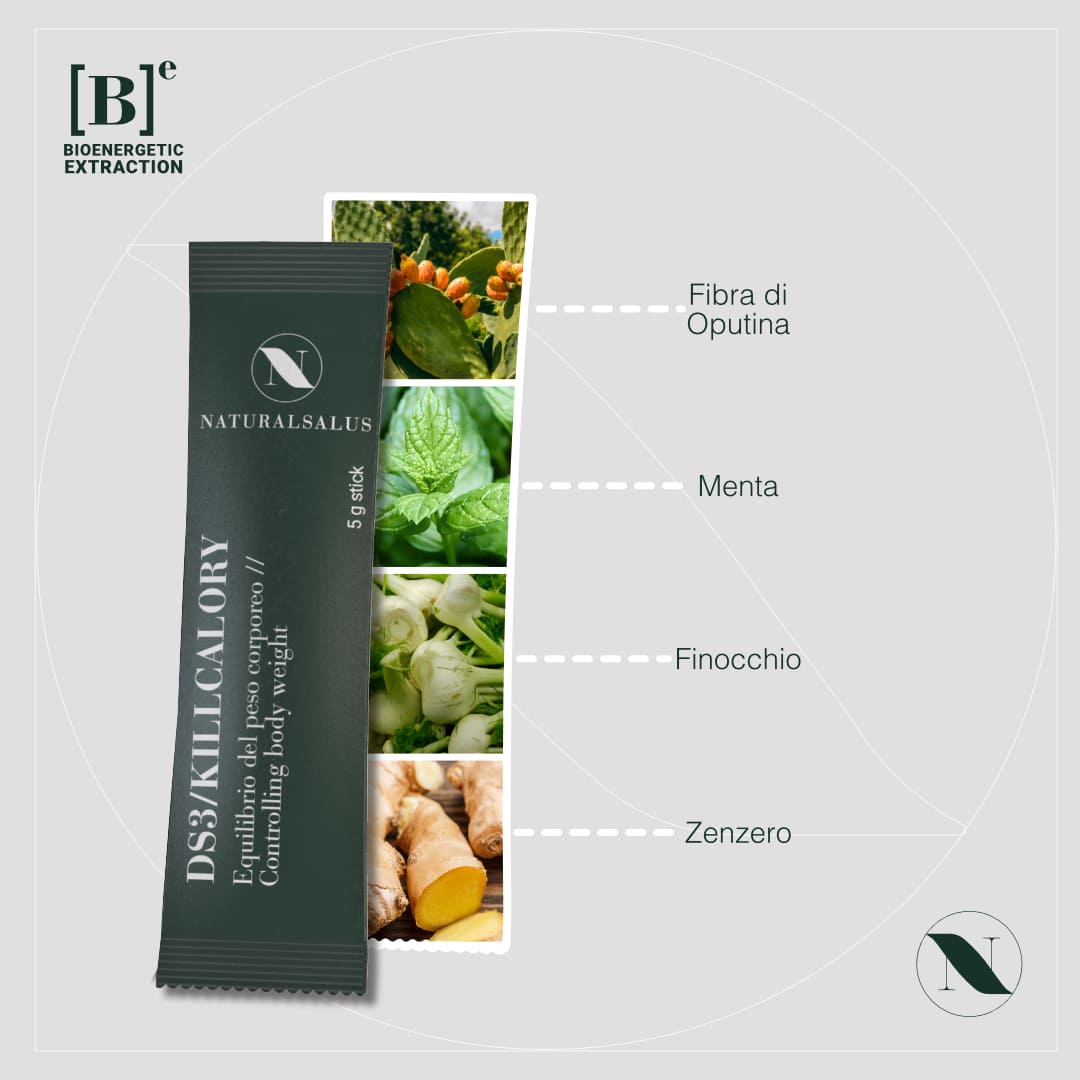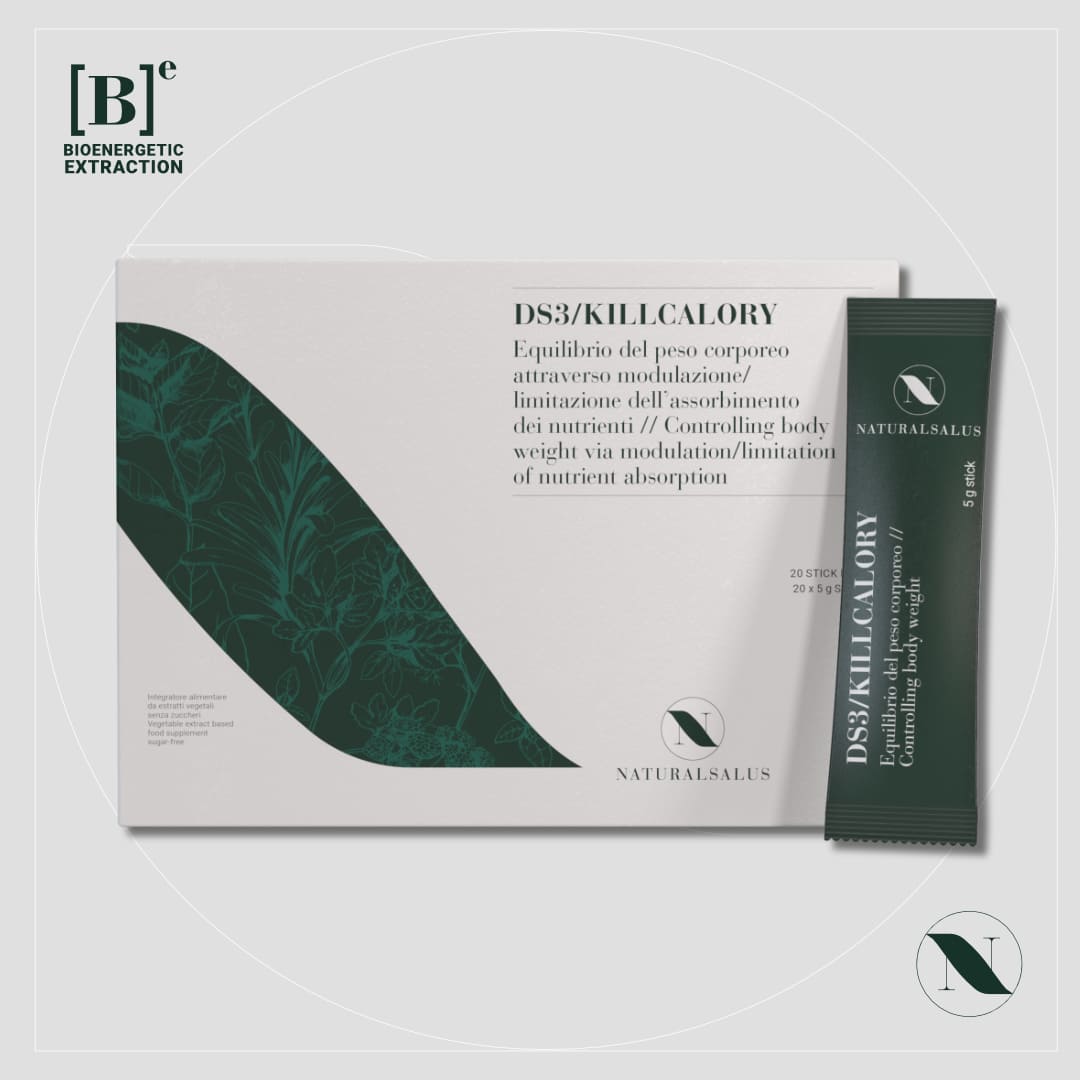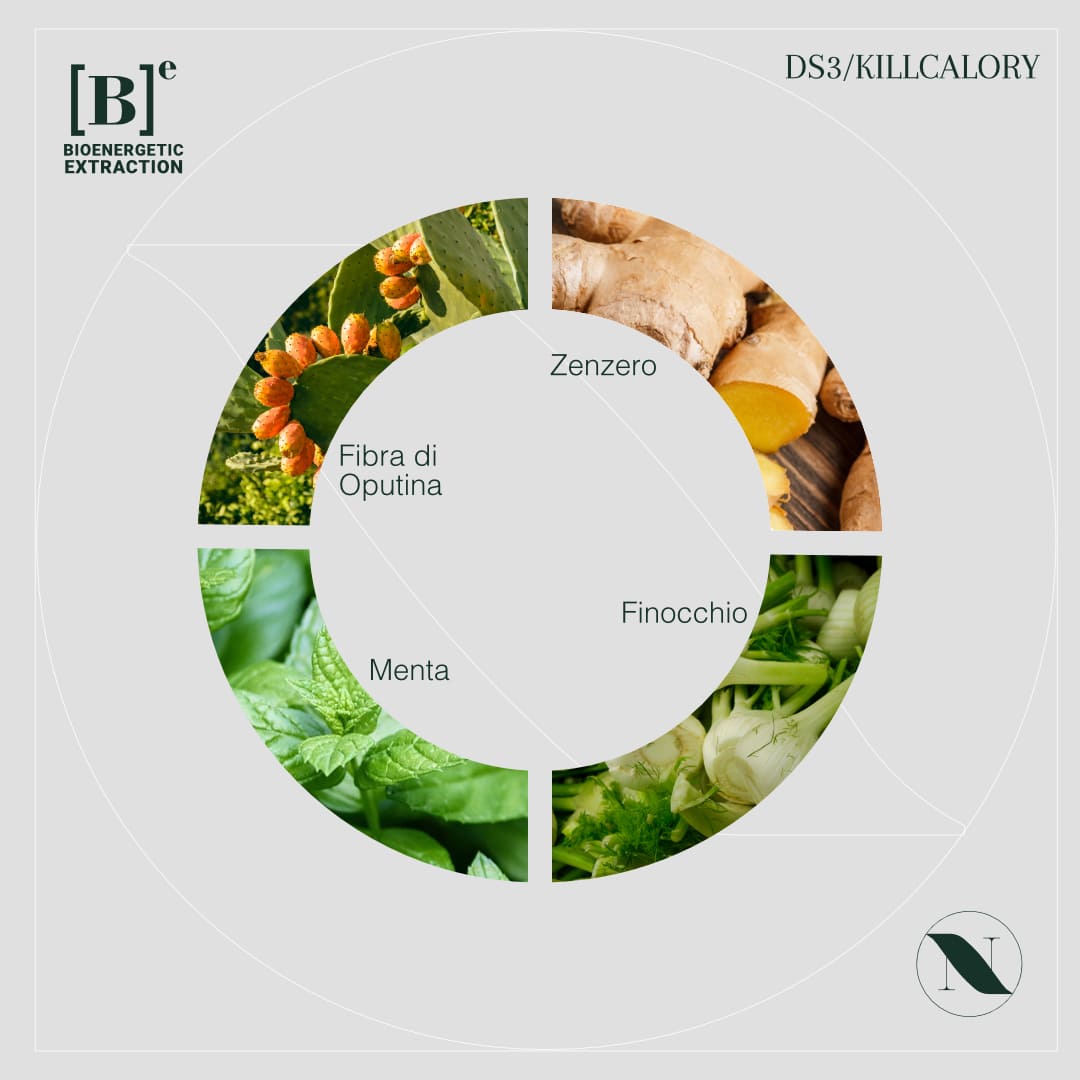

DS3/KILLCALORY - Natural calory absorption reducing food supplement
Reduces fat absorption - phytotherapeutic support for weight control and digestion
Limiting calories and managing fat metabolism can be complex, especially when dealing with rich meals or erratic eating habits. DS3/KILLCALORY by NATURALSALUS is the natural food supplement stick designed to limit calorie absorption and fat up-take from food, whilst aiding smooth digestion and gastrointestinal well-being.
Thanks to the selective Opuntia fibres action, boosted by Ginger, Fennel and Mint: DS3/KILLCALORY is designed to help control weight, reduce fat build up and support digestive metabolism, especially when dealing with hyper-caloric diets or occasional splurges.




Explore other areas of wellbeing
Discover all our other products, organised by condition, benefit, stage of life or lifestyle, and find the natural supplements that best suit your needs.



